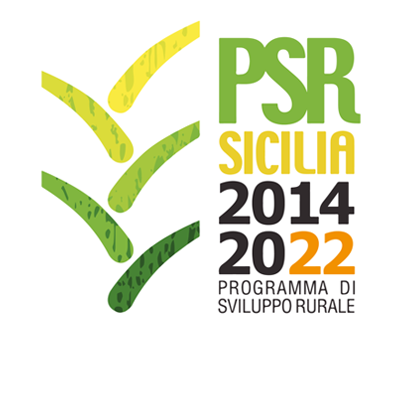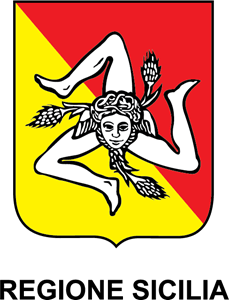Coopworth
Country
Specie
ISO3
USA
Language
eng.
Transboundary name
Coopworth
Breed classification (adaptedness)
Locally adapted
Breed classification (geographic)
International
Color comments
uni coloured: white
Number of horns males
0
Number of horns females
0
Domestication status
domestic
Taxonomic classification
Breed
Local cryo conservation status
No Material
Local Risk
Unknown
Detailed local risk status
Unknown
International Transboundary Risk detailed
Unknown
Columbia
Country
Specie
ISO3
USA
Language
eng.
Transboundary name
Columbia
Breed classification (adaptedness)
Native
Breed classification (geographic)
International
Color comments
White wool & white body
Number of horns males
0
Number of horns females
0
Horn shape size and comments
male & female: polled
Weight males
136.08
Weight females
90.72
Other specific visible traits
similar to Panama
Domestication status
domestic
Taxonomic classification
Breed
Description of origin
Laramie, Wyoming, USA; composite of Lincoln and American Rambouillet
Year of origin
1912
Location within country
19 of 50 states
Local cryo conservation status
Sufficient
Local Risk
At Risk
Detailed local risk status
Endangered maintained
International Transboundary Risk detailed
Endangered
Clun Forest
Country
Specie
ISO3
USA
Language
eng.
Transboundary name
Clun Forest
Breed classification (adaptedness)
Native
Breed classification (geographic)
International
Color comments
White fleece, Black body
Number of horns males
0
Number of horns females
0
Horn shape size and comments
Male & Female: polled
Weight males
85.05
Weight females
65.79
Domestication status
domestic
Taxonomic classification
Breed
Description of origin
Clun, Shropshire, England
Import
1970
Location within country
~24 of 50 states
Local cryo conservation status
No Material
Local Risk
Unknown
Detailed local risk status
Unknown
International Transboundary Risk detailed
Endangered
Cheviot
Country
Specie
ISO3
USA
Transboundary name
Cheviot
Breed classification (adaptedness)
Native
Breed classification (geographic)
International
Color comments
white wool and white body
Number of horns males
0
Number of horns females
0
Horn shape size and comments
Male and Female: Polled
Weight males
81.64
Weight females
63.50
Domestication status
domestic
Taxonomic classification
Breed
Description of origin
Cheviot Hills between Scotland and England
Year of origin
1372
Import
1838
Location within country
~34 of 50 state
Local cryo conservation status
No Material
Local Risk
At Risk
Detailed local risk status
Endangered maintained
International Transboundary Risk detailed
Not at Risk
California Red
Country
Specie
ISO3
USA
Language
eng.
Breed classification (adaptedness)
Native
Breed classification (geographic)
Local
Color comments
cream colored wool, cinnamon/red head and legs
Number of horns males
0
Number of horns females
0
Horn shape size and comments
Males and Females: Polled
Weight males
89.60
Weight females
61.22
Domestication status
domestic
Taxonomic classification
Breed
Description of origin
Davis, CA, USA (Private breeding); Tunis x Barbados
Year of origin
0
Location within country
~20 of 50 states. Mostly western states.
Local cryo conservation status
No Material
Local Risk
Unknown
Detailed local risk status
Unknown
Border Leicester
Country
Specie
ISO3
USA
Language
eng.
Transboundary name
Border Leicester
Breed classification (adaptedness)
Native
Breed classification (geographic)
International
Color comments
white wool and white body
Number of horns males
0
Number of horns females
0
Horn shape size and comments
Male and Female: Polled
Weight males
119.07
Weight females
85.05
Domestication status
domestic
Taxonomic classification
Breed
Description of origin
Leicestershire, England; Cheviot x Leicester
Year of origin
1767
Import
late 1700's
Location within country
~36 of 50 states
Local cryo conservation status
No Material
Local Risk
At Risk
Detailed local risk status
Endangered maintained
International Transboundary Risk detailed
Endangered
Blueface Leicester
Country
Specie
ISO3
USA
Language
eng.
Transboundary name
Bluefaced Leicester
Breed classification (adaptedness)
Native
Breed classification (geographic)
International
Color comments
white wool and white bodied. Some occurance of natural colored and black wool and bodied lambs.
Number of horns males
0
Number of horns females
0
Horn shape size and comments
Males and Females: Polled
Weight males
113.40
Weight females
86.20
Domestication status
domestic
Taxonomic classification
Breed
Description of origin
Hexham in Northumberland, England
Year of origin
0
Import
1970's
Location within country
~ 13 of 50 states. Mostly eastern states
Local cryo conservation status
Not Sufficient
Local Risk
At Risk
Detailed local risk status
Endangered maintained
International Transboundary Risk detailed
Not at Risk
Black Welsh Mountain
Country
Specie
ISO3
USA
Language
eng.
Transboundary name
Black Welsh Mountain
Breed classification (adaptedness)
Locally adapted
Breed classification (geographic)
International
Color comments
Black
Number of horns males
2
Number of horns females
0
Horn shape size and comments
Males: horned, Females: polled
Weight males
51.05
Weight females
39.71
Domestication status
domestic
Taxonomic classification
Breed
Description of origin
Wales, Britain
Year of origin
1800
Import
1972
Location within country
~12 of 50 states
Local cryo conservation status
Sufficient
Local Risk
Unknown
Detailed local risk status
Unknown
International Transboundary Risk detailed
Endangered
Barbados Blackbelly
Country
Specie
ISO3
USA
Language
eng.
Breed classification (geographic)
Local
Specific reproductive characteristic
This breed is known for prolificacy. The animals breed all year round.
Other special qualities
These are hardy animals.
Color comments
Body color can vary from light fawn through brown to dark red. Contrasting black belly extending down the back side of the rear legs and including the underside of the tail. Facial bars commonly referred to as
Efabis main colour
badger faced
Efabis skin colour
, with black nose, lower jaw, and inside ears.
Horn shape size and comments
0
Wither height males
0
Wither height females
Polled
Weight males
78.00
Weight females
65.00
Other specific visible traits
52.2
Herdbook
41.7
Herdbook established
Medium-sized, long-legged, with tail extending to the hocks. Ram has a mane of coarse hair. Sheep of both genders are polled with no sign of any outgrowth of the horn plate.
Domestication status
y
Taxonomic classification
1997
Description of origin
domestic
Year of origin
0
Import
Compelling historical evidence that the breed originated and evolved in Barbados from crosses of African hair sheep and European wooled breeds.
Local cryo conservation status
First imported from Barbados in 1904 by U.S. Department of Agriculture
Detailed local risk status
Sufficient
Regional Transboundary Risk (detailed)
At Risk
International Transboundary Risk detailed
Critical Maintained
Texel
Country
Specie
ISO3
URY
Language
dutch
Transboundary name
Texel
Breed classification (adaptedness)
Exotic
Breed classification (geographic)
International
Number of horns males
0
Number of horns females
0
Herdbook
y
Herdbook established
1971
Domestication status
domestic
Taxonomic classification
Breed
Description of origin
recently imported; exotic
Year of origin
0
Local cryo conservation status
Sufficient
Local Risk
At Risk
Detailed local risk status
Critical Maintained
International Transboundary Risk detailed
Not at Risk




